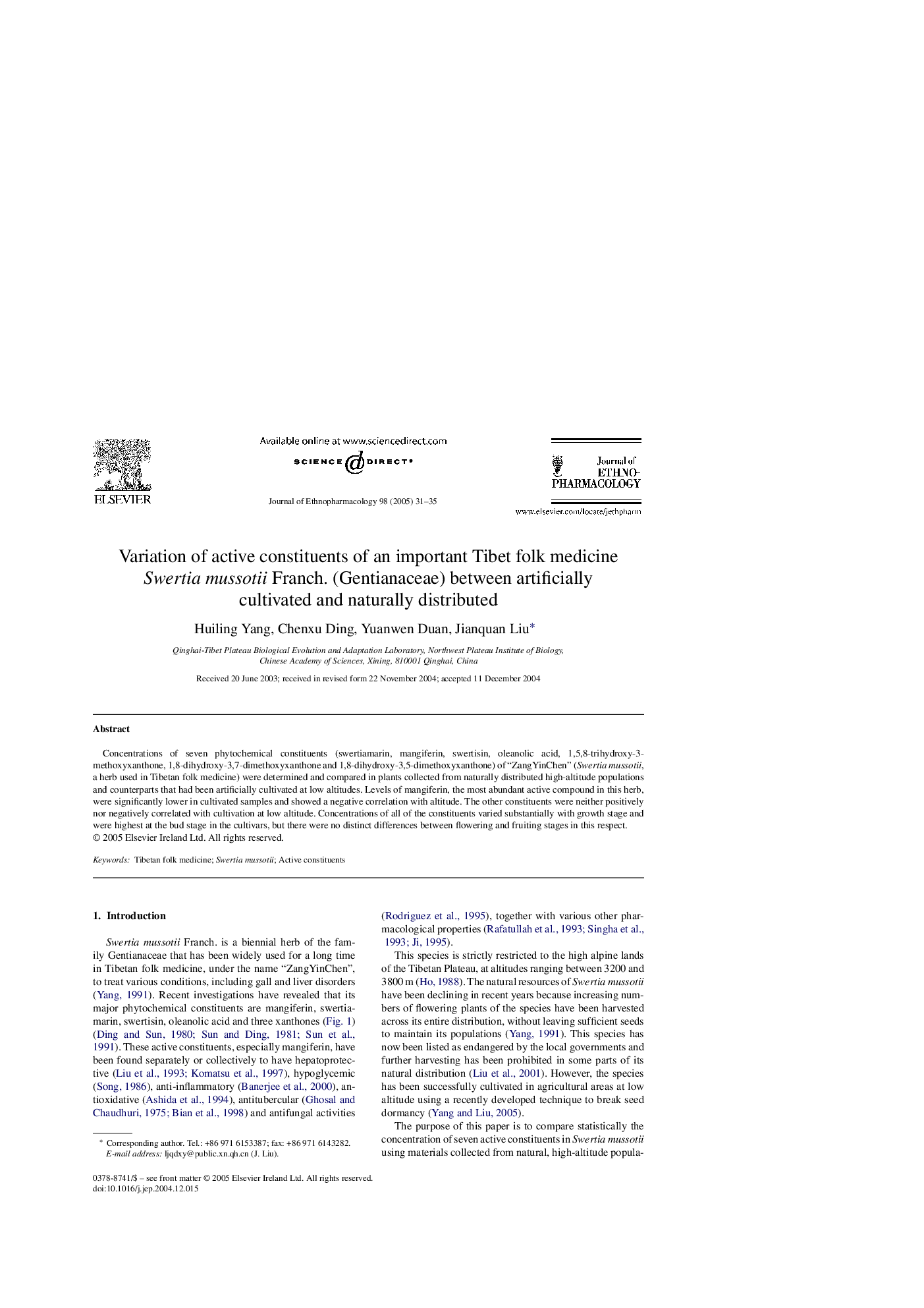| Article ID | Journal | Published Year | Pages | File Type |
|---|---|---|---|---|
| 9011363 | Journal of Ethnopharmacology | 2005 | 5 Pages |
Abstract
Concentrations of seven phytochemical constituents (swertiamarin, mangiferin, swertisin, oleanolic acid, 1,5,8-trihydroxy-3-methoxyxanthone, 1,8-dihydroxy-3,7-dimethoxyxanthone and 1,8-dihydroxy-3,5-dimethoxyxanthone) of “ZangYinChen” (Swertia mussotii, a herb used in Tibetan folk medicine) were determined and compared in plants collected from naturally distributed high-altitude populations and counterparts that had been artificially cultivated at low altitudes. Levels of mangiferin, the most abundant active compound in this herb, were significantly lower in cultivated samples and showed a negative correlation with altitude. The other constituents were neither positively nor negatively correlated with cultivation at low altitude. Concentrations of all of the constituents varied substantially with growth stage and were highest at the bud stage in the cultivars, but there were no distinct differences between flowering and fruiting stages in this respect.
Keywords
Related Topics
Health Sciences
Pharmacology, Toxicology and Pharmaceutical Science
Pharmacology
Authors
Huiling Yang, Chenxu Ding, Yuanwen Duan, Jianquan Liu,
